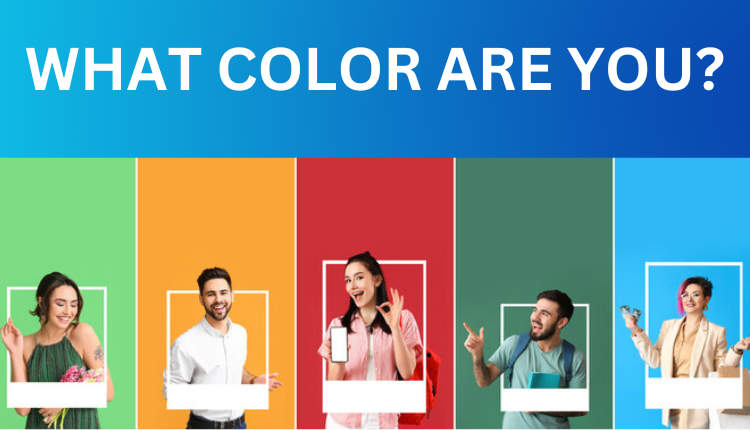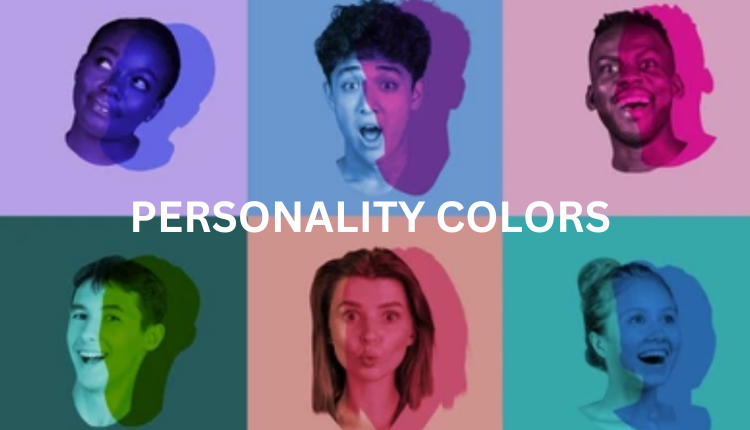
Your personality influences almost every aspect of life. Personality tests can shed light on the values, likes, and dislikes that help explain why we are the way we are.
Workplaces use them to help the team learn to value their differences. Students take them to discover future careers. Personality tests can also help us identify opportunities for our personal growth.
There is a sea of options when it comes to choosing a personality test. Some tests take a few minutes. Others ask us to take a long look inward. Each test takes a different approach to explain the range of traits that make us human.
The personality color test provides a method of understanding ourselves and others. The test uses the colors grey, green, orange, red, blue, and purple to represent six different personality types.
The six colors combine in different ways to make up different personality spectrums.
For most people, one of the six types is more dominant than the others. Learning about our personalities offers insights into our different behaviors, motivations, and more.
We often associate certain colors with certain characteristics. Orange, for example, turns our minds toward action, adventure, and excitement. Primary orange personality types are spontaneous, fun-loving, and independent.
By using colors instead of labels, the colors personality test aims to improve global understanding. The intuitive classification makes it easier for us to identify and remember the four personality types.
How the Colors Personality Test Works
Test takers answer a series of questions to rate their likes and dislikes. Based on your answers, the test identifies your primary personality test color. This is the color that best describes your personality.
But the test does more than show you the color of the best fit. All six colors influence your personality to some degree.
A color code personality test can help you understand the combination of traits that make you unique.
The true colors test also reveals your values, motivations, social skills, learning styles, and more.
The Meaning Behind Each Personality Test Color
Are you grey, green, orange, red, blue, or purple? Each color corresponds with certain personality traits. Your likes and dislikes point to the color that best describes you.
Grey symbolizes compromise, neutrality, control, and practicality. They handled stressful situations more maturely.
Greens meanwhile find meaning in innovation. The color represents orderly systems like those found in nature. Greens are logical, intellectual, and even philosophical.
The color orange represents activity and excitement. These fun-loving individuals are often humorous, witty, and charming.
Red is a color of strength, courage, and risk takers. They are passionate and ambitious individuals.
Color psychologists point to blue for its calming effects. Blues also have strong imaginations and find joy in music, art, and entertainment.
The color purple stands for reliability, originality, and authenticity. These individuals want to make the world better by spreading peace and positive vibes.
What Your Personality Colors Reveal About You

Discovering your primary personality test color can open a window to understanding your behaviors, thoughts, and feelings.
This self-awareness can help guide your choices toward a better life. Understanding ourselves can help us find fulfillment in our work, relationships, and passions.
Based on color psychology below are the personality traits that you may possess
Grey
Being a grey, you shape yourself according to situations. You will find a middle way in every situation.
You are trying to protect yourself from the chaotic outside world, even to the point of isolating yourself from others, leaving you with the feeling that you don't really fit in or belong anywhere.
Green
As a primary green, you put your faith in the facts. You enjoy finding new solutions to old problems. You care about doing what’s right just as much as being right.
Orange
If the thought of a nine-to-five job makes you cringe, you may be a primary orange. Your independent nature means you need freedom and flexibility, especially in your work life.
You find paperwork and deadlines particularly frustrating. You might consider a job that puts you in a more hands-on role.
Red
As a red, you may find yourself as a quick thinker, vigorous leader, and confident individual who works hard to achieve their goal.
Your spontaneous nature and need for adventure make you a passionate and ambitious individual, and you also might harbor a slight competitive streak.
Blue
As a primary blue, you see yourself as warm and caring. Your friends say you’re a good listener and a loyal friend. You find satisfaction in helping others.
A career in social work, nursing, or human resources would put your compassion and drive to good use.
Purple
Purple is said to represent an artistic and unique individual, who is often very intuitive and deeply interested in spirituality. They are visionary with a great need to take part in humanitarian issues.
Active and compassionate, purple lovers are said to be constantly analyzing and observing everything that crosses their path. A little moody sometimes? Maybe, but that's only because you experience and feel everything so deeply.
Improving Relationships With A Color Personality Quiz
Appreciating our differences helps us develop better relationships. Employees often leave their jobs because they feel unappreciated or misunderstood. The same is true for romantic relationships.
Knowing and respecting others’ values can help us to show love to our friends and family.
- Greys like stability.
- Greens seek acknowledgment and acceptance for the everyday things you do
- Oranges seek recognition and praise.
- Reds like power and adventure.
- Blues desire acceptance and communication.
- Purples give self-importance.
Understanding what frustrates others can also help you avoid missteps and find solutions.
- Greys can work on decision making
- Greens could simplify their ideas for others.
- Oranges can learn strategies to cool their quick tempers.
- Blues can work to resolve conflict rather than avoid it.
- Reds can use meditation to reduce their anger issues.
- Purples can get out of daydreaming and face reality
Conclusion
While a personality test can be a good first step toward self-awareness, they seldom provide solutions to ongoing problems.